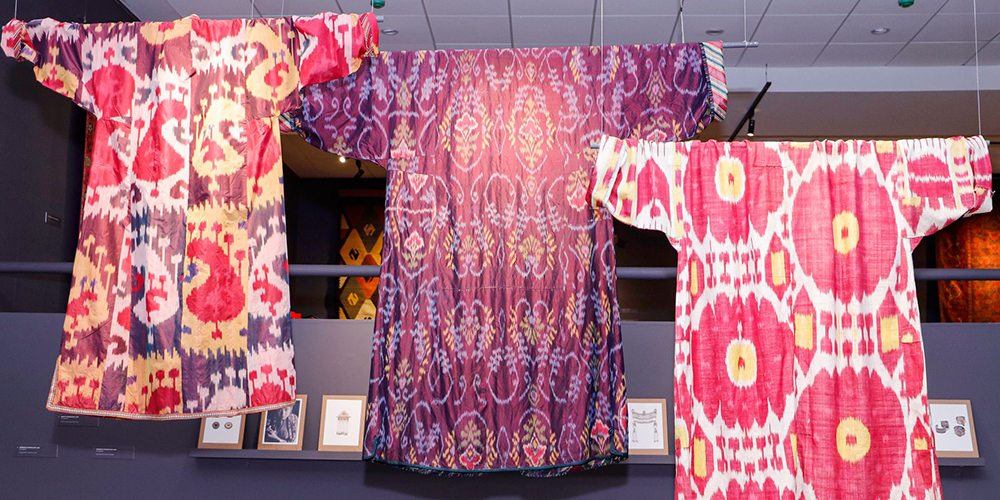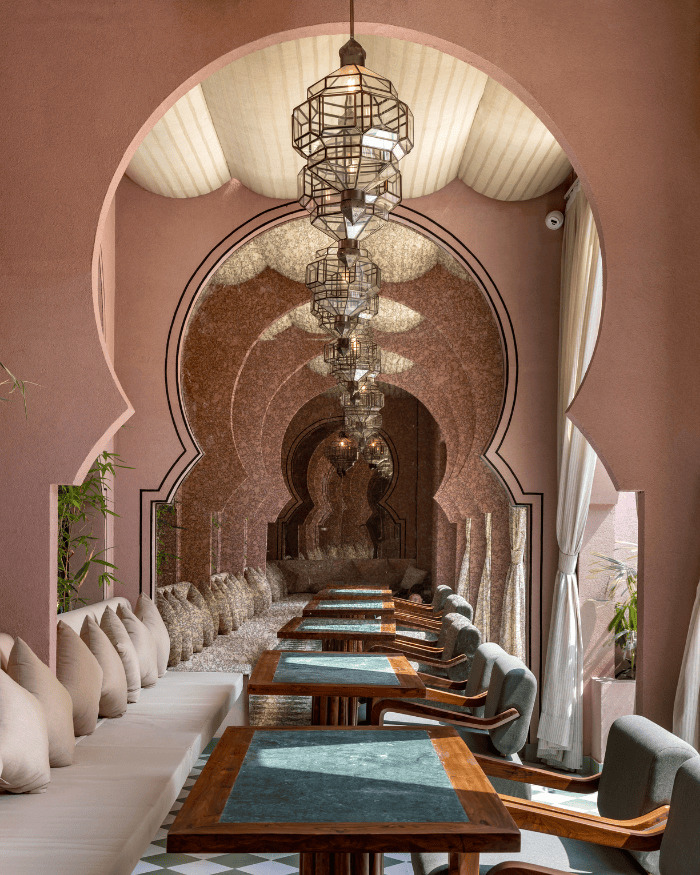Ever wondered what it would be like to live in 19th century Central Asia? Let’s take out some magic carpets and get on board for a mesmerising journey! Textile connoisseurs and Founders of Shades of India, David and Mandeep Housego present ’Bukhara’, a journey on the Silk Route at The National Crafts Museum, New Delhi, from 1st – 15th February 2023. A first ever exhibition of their private collections and archives of textiles—Suzani, carpets and ikats unique to Central Asia in the 19th century. Capturing the essence of the impassioned creativity that evolved in the Bukhara region, bold, natural colours and striking abstract forms characterise the textiles on display.

“My love for textiles started from Iran from where I collected antique tribal rugs while working as a journalist”, says David who has been an avid admirer of Indian crafts and textiles when he researched the East India Company and subsequently through his travels over the years across different parts of Asia. It is this very passion for textiles that led to the launch of the textile brand Shades of India with his wife Mandeep Nagi.

What sets this exhibition apart is that it not only pays homage to David’s and Mandeep’s love for textiles, but is also representative of the ethos and inspirations that come to life across all designs from the Shades of India repertoire. Revealing the lesser known legacy of Uzbekistan culture, the motifs on the rugs take cues from various natural and celestial objects like the sun, the moon, trees, flowers and even human forms.

Suzani embroideries (the term comes from the Tajik ‘needle-crafted’) are unique in design and technique to Central Asia, and particularly to the Uzbek and Tajik communities. Most Suzani were embroidered in silk thread on cotton fabric—though some were silk on silk. The embroideries of Bukhara draw on both pomegranate motifs and a dazzling combination of flowers including carnations, iris, and tulips supported by sprigs of green foliage. Rosettes on the borders in the form of a blossoming flower were seen as a symbol of sun or moon and communicating a cosmic force to display the diversities and cultures of Uzbekistan.

The display also includes a large and finely woven main Tekke Turkmen rug from the early 19th century of which there is a similar piece in the Metropolitan Museum in New York. Its rows of guls are characteristic of the Tekke—each Turkmen tribe having its own iconic gul as though a signature of the tribe.

Designs were inspired by all that filled Bukhara, and the oases and deserts beyond. The ikats drew on the tile work on mosques, the painted walls that decorated houses, the jewellery that women wore, in turtles and snakes, in the moon and star motifs in red copiously found in suzani, in the geometrical forms and lattice work of the woollen rugs of the nomadic Turkoman tribes, in the foliage and iconic forms from the Bronze age and later.
“Though Uzbekistan is so geographically close to India and its textiles draw so heavily on Indian influence, the beautiful suzani, rugs and ikats are relatively unknown in India and am glad to have this opportunity to showcase my collection as a unique opportunity for craft & textile enthusiasts to have an immersive experience of Central Asian art which has long been difficult to access”, adds David.























